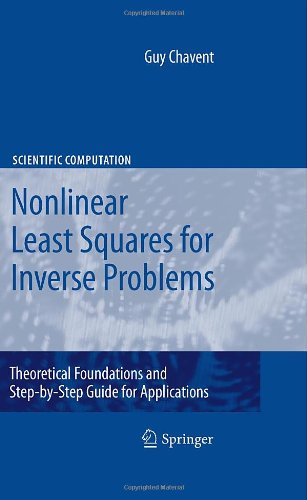

Most ebook files are in PDF format, so you can easily read them using various software such as Foxit Reader or directly on the Google Chrome browser.
Some ebook files are released by publishers in other formats such as .awz, .mobi, .epub, .fb2, etc. You may need to install specific software to read these formats on mobile/PC, such as Calibre.
Please read the tutorial at this link: https://ebookbell.com/faq
We offer FREE conversion to the popular formats you request; however, this may take some time. Therefore, right after payment, please email us, and we will try to provide the service as quickly as possible.
For some exceptional file formats or broken links (if any), please refrain from opening any disputes. Instead, email us first, and we will try to assist within a maximum of 6 hours.
EbookBell Team

4.0
26 reviewsThis book provides an introduction into the least squares resolution of nonlinear inverse problems. The first goal is to develop a geometrical theory to analyze nonlinear least square (NLS) problems with respect to their quadratic wellposedness, i.e. both wellposedness and optimizability. Using the results, the applicability of various regularization techniques can be checked. The second objective of the book is to present frequent practical issues when solving NLS problems. Application oriented readers will find a detailed analysis of problems on the reduction to finite dimensions, the algebraic determination of derivatives (sensitivity functions versus adjoint method), the determination of the number of retrievable parameters, the choice of parametrization (multiscale, adaptive) and the optimization step, and the general organization of the inversion code. Special attention is paid to parasitic local minima, which can stop the optimizer far from the global minimum: multiscale parametrization is shown to be an efficient remedy in many cases, and a new condition is given to check both wellposedness and the absence of parasitic local minima.
For readers that are interested in projection on non-convex sets, Part II of this book presents the geometric theory of quasi-convex and strictly quasi-convex (s.q.c.) sets. S.q.c. sets can be recognized by their finite curvature and limited deflection and possess a neighborhood where the projection is well-behaved.
Throughout the book, each chapter starts with an overview of the presented concepts and results.